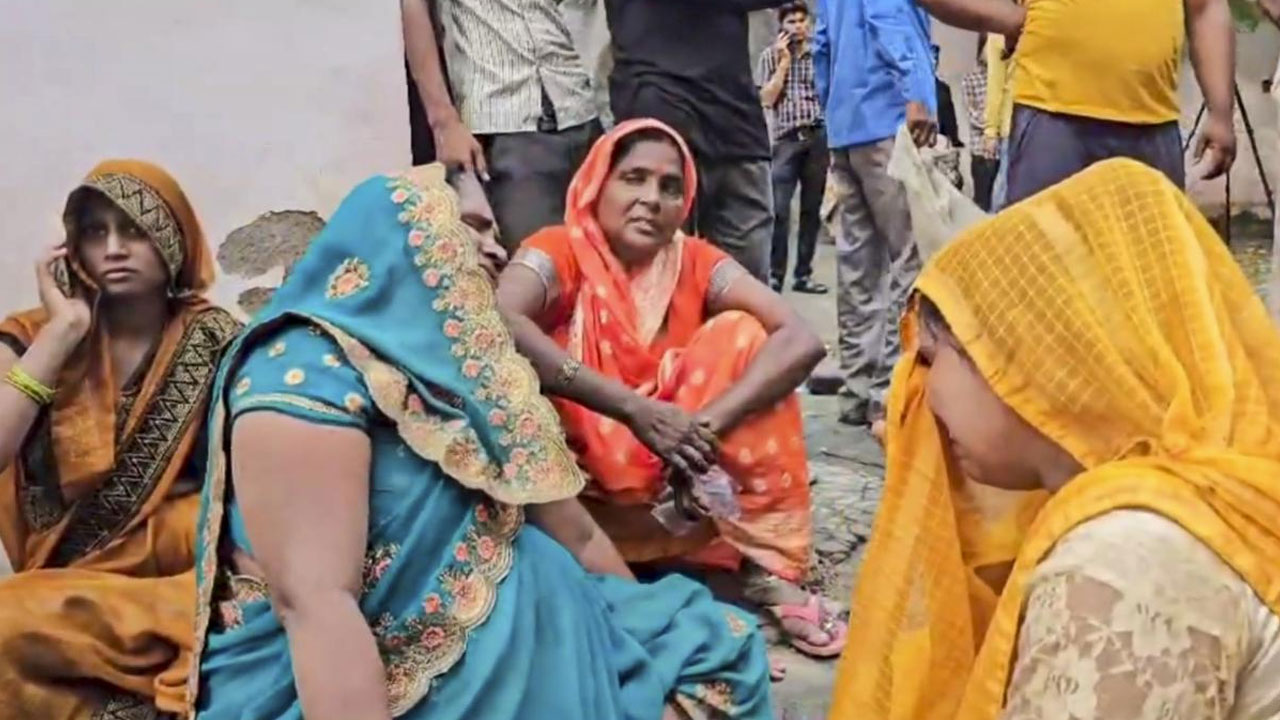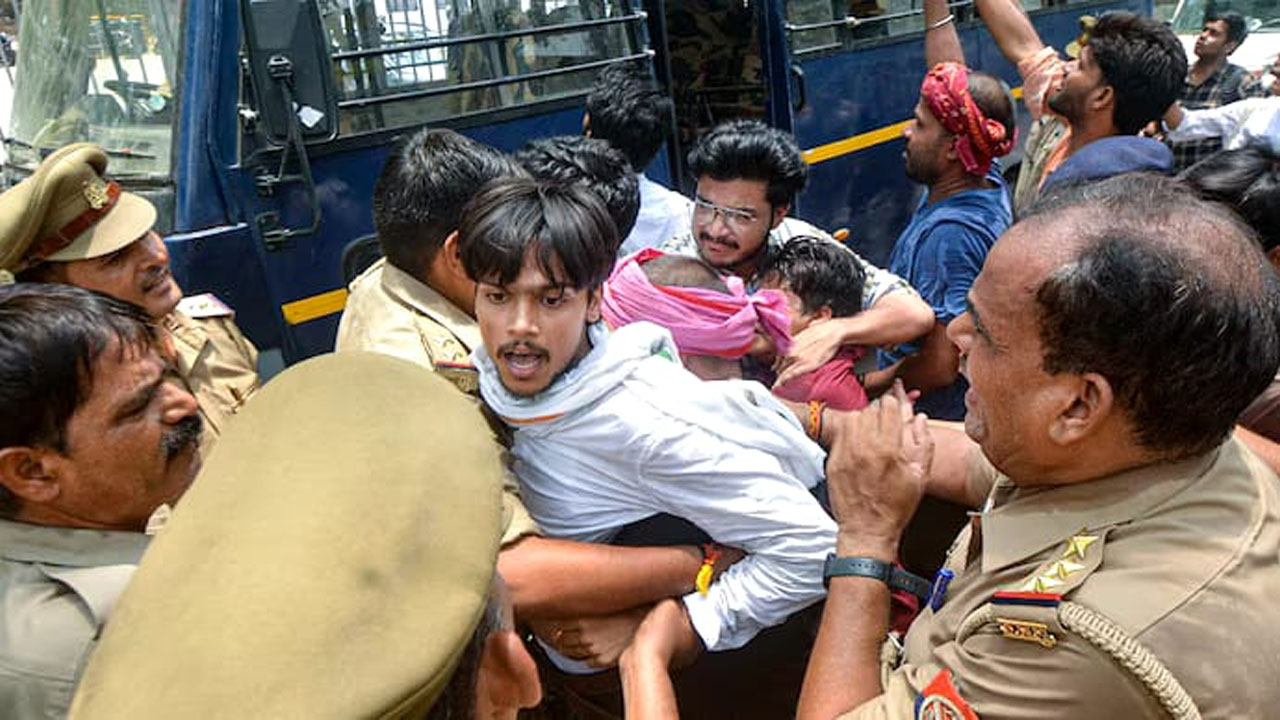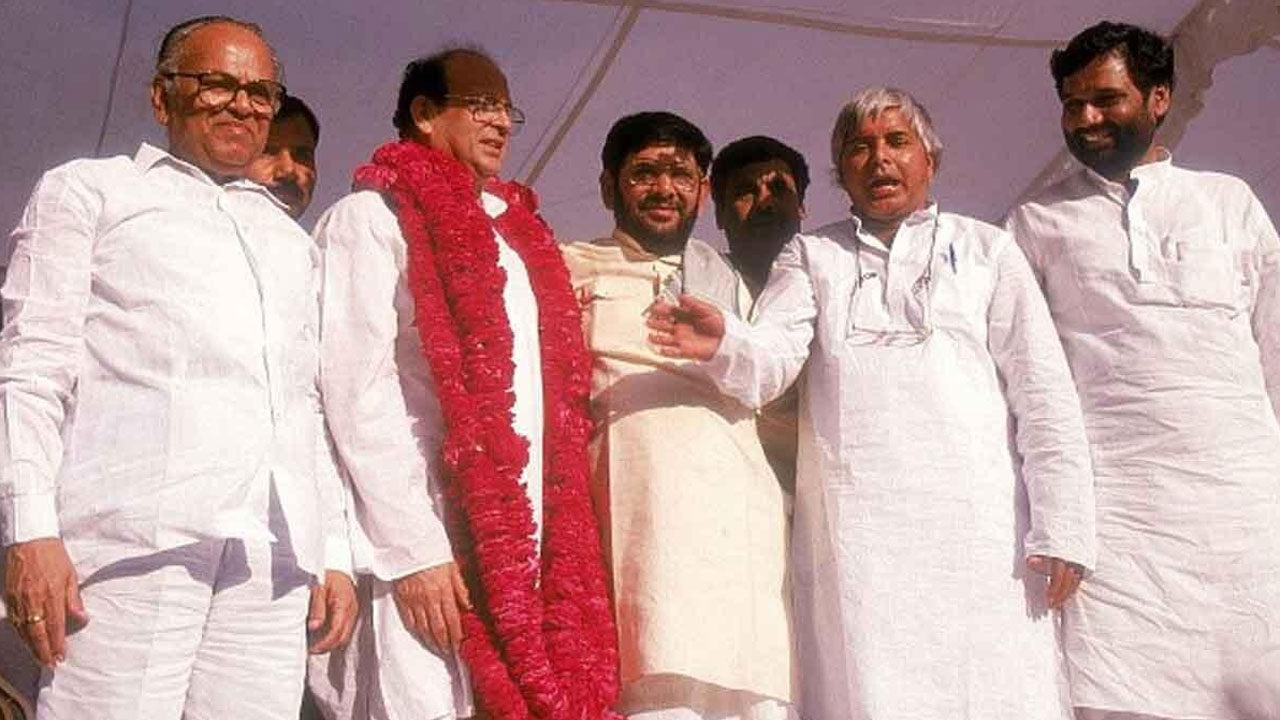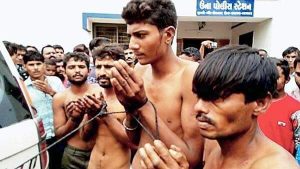
At long last, Prime Minister Narendra Modi broke his silence on the brutal assault on Dalits in BJP-ruled Gujarat and assured the nation that cow vigilantes would be reined in. But it is difficult to say whether the Hindutvavadi government will actually take action against these fascist cow protectors.
Anti-social “gau rakshaks” had publicly flogged Dalits in Una town of Somnath district for skinning a dead cow. Through the barbaric attack, the saffron brigade sent out a clear signal that it will go to any extent to protect the “gau mata”, even it means committing crimes – thrashing Dalits and Muslims to stuffing cow dung into their mouths to even murdering them. It is hard to believe that all this was going on for so long and the police and the government didn’t know about it. The marauders are far from subdued. In Una again, they attacked Dalits who were returning from the huge “Dalit Asmita Rally” and the police looked on.
Let alone remote areas, even Delhi is not free from the terror of the cow protectors. Hindu fascists have painted their manifesto on the walls of the national capital demanding that cow killers be hanged. When capital punishment is sought for the killers of the cow, it fills the hearts of India’s Bahujans (which include Dalits, OBCs, Tribals, Muslims and other religious minorities) with terror.
History stands testimony to the fact that the trend of whipping up religious passions in the name of the cow began in the colonial era and its objective was to unite the Hindus politically and socially and strengthen the brahmanical system.
The brahmanical leadership had realized in the 19th century itself that cow was a handy issue for uniting the Hindus – who were deeply divided into innumerable castes and sects and had regional variations too – and for pitting them against non-Hindus.
Violence in the name of the “sacred cow” began in 1870 and its target was mainly the Muslims. In 1882, the Gau Raksha Sanstha was established under the leadership of Dayanand Saraswati, founder of Arya Samaj. Dayanand Saraswati used it to build Hindu unity on the one hand and fan anti-Muslim sentiment on the other. Gradually, other organizations committed to the protection of the cow came into being. In 1893, the issue triggered a major riot in Azamgarh. The violence that followed left more than 100 people dead in different parts of the country. In 1912-13, there was bloodshed in Ayodhya for the “sacred cow”. In 1917, Bihar’s Shahabad witnessed communal violence, in which Muslims suffered loss of life and property. What was unfortunate was that a large number of leaders of the Congress – which swore by secularism and Hindu-Muslim unity – also joined the rioters. A big section of Congressmen clandestinely joined hands with Hindu Mahasabha – a rabidly communal organization – and participated in the riots that it had engineered. Mohammed Sajjad, a historian from Aligarh, writes in his book Muslim Politics in Bihar, that after this riot, a large number of Muslims deserted the Congress. Thus, it can be said without any doubt that riots in the name of the cow significantly weakened Hindu-Muslim unity during the freedom struggle.
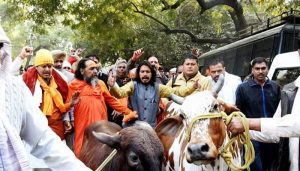
It is unfortunate that cow politics continued to flourish even after Independence. At its root was the same brahmanical mindset that led to the inclusion of the ban on cow slaughter under the Directive Principles of State Policy in the Constitution. Gandhian thought, which considered protecting the cow a duty of the Hindus, was behind these brahmanical policies.
One by one, most of the states promulgated cow protection laws that were anti-people and gave the police and the administration a tool to harass innocent citizens. Today, these laws are being used to harass Bahujans.
The RSS and its auxiliary organizations have been taking the law into their hands ostensibly to protect cows. Thousands of cow protection bodies are operating in the country under the aegis of the RSS. An investigation would surely reveal the Sangh Parivar connections of the men who assaulted Dalits in Una, Gujarat.
The RSS wants to gain a firmer foothold among the Hindus and spread hatred against the Muslims through these organizations. It has been peddling the white lie that cow slaughter began in India with the advent of Muslims. Historians reject this notion outright. In his well-known book The Myth of the Holy Cow, renowned historian D.N. Jha writes that people consumed cow meat in the Vedic and post-Vedic eras and that Hindus did not always regard the cow as sacred. That was so even in the brahmanical era that followed the Vedic age. Then, cow meat was served as a delicacy in feasts.
Similarly, great historian D.D. Kosambi writes in his path-breaking essay Caste or Race that while Vedic Brahmins ate cow meat, Saraswat Brahmins and Brahmins of Kashmir and Bengal did not lose their caste even if they consumed meat.
Historians are unanimous that consumption of cow meat was prohibited in religious scriptures written after the Vedic age. Brahmins tried to enforce the ban but society never accepted it fully. As sociologists have repeatedly pointed out, no society is solely guided by religious texts. In India, with its bewildering diversity of religions, castes and communities, it would have been impossible for the brahmanical forces to ensure total compliance with their norms.
Even Swami Vivekananda, whom RSS considers its hero, had advised Hindus to eat beef and play football. Historian Gyan Pandey revealed this titbit in his much talked-about article “Which of us are Hindus?”. The RSS, of course, vehemently denies it. For the RSS, the cow is central to the Hindu identity and it keeps on warning Dalits against any slip-up in respecting the cow.
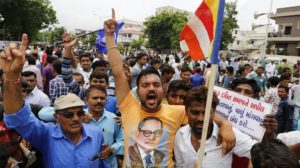
Dr B.R. Ambedkar had exposed the politics of the “sacred cow”, categorically asserting that it was responsible for Untouchability. Babasaheb wrote that Dalits emerged as a community in the 4th century AD after Brahmanism got the better of the Buddhist religion. Altering their strategy, Brahmins began thrusting vegetarianism on the people and launched a campaign against consumption of beef. Since gypsy tribes were dependent on cow for meat, skin and other things, they steadfastly refused to stop consuming beef and as a punishment, Brahmins branded them as Untouchables. Thus, the system of Untouchability was born in our country 1500 years ago and is yet to be completely eliminated.
Post-Independence, there was hope that the bloody politics of cow protection would come to an end. But that did not happen. Many states have enforced draconian cow-protection statutes. While the RSS is using violent means to “protect the sacred cow”, that section of society which calls itself “liberal” and “progressive” is keeping quiet – even though it knows very well that according “sacred” status to the cow may deprive millions of their source of livelihood. Most of the “progressives” are yet to gather the courage to speak out against the draconian cow protection laws.
In 2012, a so-called secular government was ruling the country. At that time, when some students of JNU – widely considered a progressive institution – asked some “unsacred” questions about the sacred cow, the administration charged them with spreading “unrest” by raking up a religious issue.
What is disturbing is the silence of the progressive camp. They do protest against the thuggery of cow protectors but their “revolutionary zeal” remains confined to the framework of law and order. If we really want to end the bloodshed in the name of sacred cow, we will have to stop looking at it only as a law-and-order issue. We will have to focus on its historical, social, economic, cultural and religious dimensions, too.



